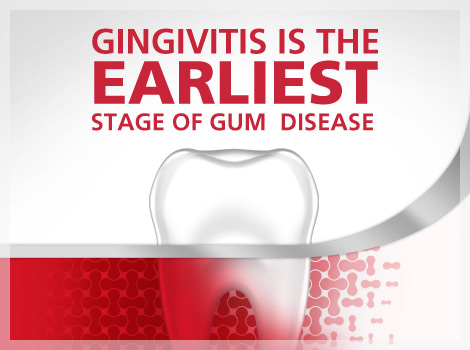
Gingivitis might be a common gum disease, but if not treated properly, can lead to much serious oral health conditions like tooth decay, periodontitis, and finally tooth loss. The symptoms of gingivitis are swollen gums that bleed, bad breath, receding gum line and weak gum tissues.
What Is Gingivitis?

Gingivitis is a gum disease that occurs due to a bacterial infection. It affects the gingiva or the gums, making them weak and prone to bleeding. Gingivitis is quite common and mild in nature and can be treated easily. If ignored, it can cause the gums to separate from the teeth (tooth loss). But a consistent and proper care of one’s oral health can prevent and also cure it.
Gingivitis’ Causes
 Not maintaining a good oral hygiene is the most common cause of gingivitis. If attention is not given to the care of one’s oral health, the chances are that person may get gingivitis. A poor oral hygiene leads to plaque and tartar formation on teeth which further leads to inflammation of the surrounding gum tissues.
Not maintaining a good oral hygiene is the most common cause of gingivitis. If attention is not given to the care of one’s oral health, the chances are that person may get gingivitis. A poor oral hygiene leads to plaque and tartar formation on teeth which further leads to inflammation of the surrounding gum tissues.
Gingivitis’ More Serious Form and Its Supposed Link with Other Diseases
A rather severe form of gingivitis is Acute Necrotising Ulcerative Gingivitis (ANUG), colloquially known as trench mouth. This is a rare disease in developed countries but common in developing and under-developed countries, especially the ones with low living standards. People affected with this form of gingivitis suffer from infected and bleeding gums and ulcerations of inter-dental regions.
Also, research has hinted at a possible link of chronic gingivitis with diabetes, heart and lung diseases, and rheumatoid arthritis. This hasn’t been confirmed as of yet, but this should not make people take the disease lightly.
Prevention of Gingivitis
 Taking care of your oral hygiene is the most important step in order to prevent gingivitis. Here is how you can look after your teeth and gums and keep the gum disease at bay:
Taking care of your oral hygiene is the most important step in order to prevent gingivitis. Here is how you can look after your teeth and gums and keep the gum disease at bay:
- Use quality toothpaste and a soft toothbrush. Replace your toothbrush after two to three months of usage. Electric brushes are pretty effective at removing plaque and tartar.
- Brush your teeth at least twice daily: before hitting the bed in the night and after getting up in the morning. Brushing properly for two to three minutes will suffice. Brush your tongue a little bit and then use a tongue cleaner to ensure an all-round oral health.
- Along with brushing and flossing, try using an inter-dental cleaner, like a dental pick, inter-dental brush or dental stick that will clean between the teeth, an area where normal toothbrushes can’t clean effectively.
- Floss at least once a day. Flossing before you brush helps in removing the loose food particles and bacteria from your mouth.
- Use a mouth rinse to help reduce plaque between your teeth.
- Quit smoking and chewing tobacco.
- Eat foods rich in Vitamin-C for gum health.
- Eat healthily. Keep your blood sugar levels in control if you have diabetes.
- Go for regular dental check-ups and cleaning as per your dentist’s recommendation. Dentists in India usually recommend cleanings every six to twelve months. Also, going for annual dental x-rays can spot diseases unobserved in a visual dental examination.
So if above-stated precautions are adhered to, then it can be assumed that one will stay safe from gingivitis.
